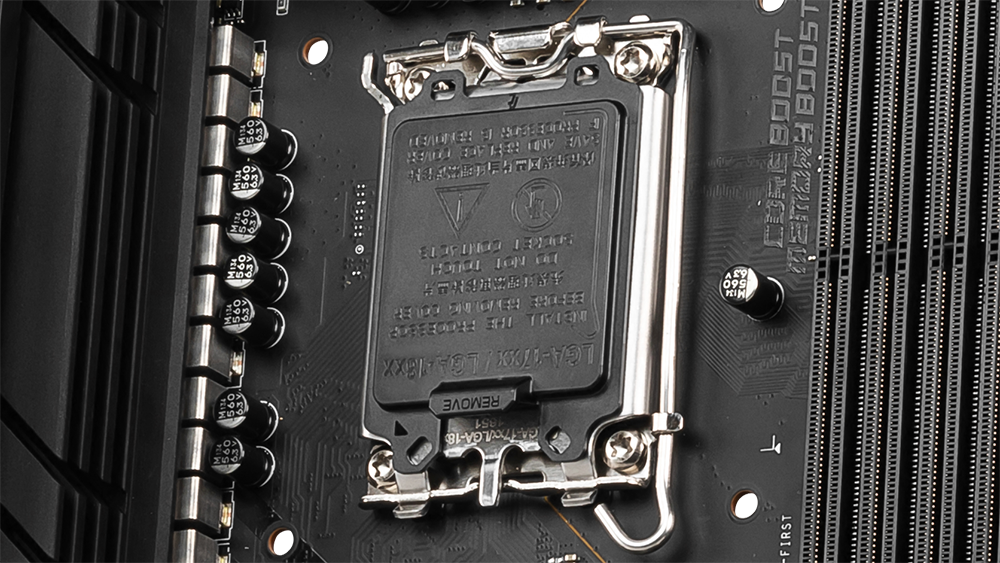Intel Alder Lake H670, B660 and H310 motherboard specifications revealed
Intel 12th Gen features and functionality without the Z690 sticker shock.

The specifications H670, B660 and H610 motherboard specifications have leaked courtesy of @momomo_us. If they turn out to be accurate—and given momomo’s track record, we have no reason to doubt they won’t be—it points towards H670 and B660 series chipsets being highly capable, though we don't expect too much from cheap H610 boards. Affordable boards to pair with upcoming i3 and i5 CPUs will be very welcome indeed, though.
(; ´・ω・)? pic.twitter.com/QIAYWViUFTDecember 4, 2021
Let's begin with the H670 chipset, which sits one step below Z690. Most of the core functionality remains the same, including DDR4 and DDR5 support. The H670 chipset lacks the ability to overclock the CPU, which is difficult anyway unless you have very good cooling. Thankfully, H670 retains the ability to overclock the memory. The DMI link remains at 8x, meaning it will be possible for manufacturers to make H670 boards with up to four or five M.2 slots.
The USB count is the disappointing part as the H670’s USB 3.0 count is lacking compared to Z690. Of course, thanks to a high number of chipset PCIe lanes, board manufacturers are free to include auxiliary USB controllers. Some H670 boards are likely to be priced at pretty steep levels making them strong entry/mid range Z690 competitors.
B660 is the chipset that most DIY’ers on a budget will look at. Compared to Z690 it loses the ability to overclock the CPU, while retaining memory OC capabilities. It includes only one PCIe 5.0 slot, which at this point in time means very little—it's possible PCIe 5.0 support will be optional or limited to high end models. The DMI link drops to 4x, half that of Z690 and H670, so board makers are unlikely to include more than two or three M.2 slots. The USB count drops only a little from H670.
B660 looks like it has a set of specs that the majority of the market will find perfectly adequate. You can run a fast CPU like the Core i5 12600K and any GPU you wish along with a fast NVMe SSD or two and some HDDs for storage. B460 and earlier boards lost a good chunk of performance when stuck with DDR4-2666. Luckily locked memory is a thing of the past.
We can expect to see high end B660 boards cost more than their entry level Z690 counterparts, especially those that include a strong VRM, good heatsinks and Wi-Fi 6E. Some B660 boards should end up offering a well balanced core feature set and good bang for buck.

Best CPU for gaming: the top chips from Intel and AMD
Best graphics card: your perfect pixel-pusher awaits
Best SSD for gaming: get into the game ahead of the rest
H610 looks to be very much entry level. There’s still a PCIe 5.0 slot which is surprising, along with DDR5 support too, but curiously, there's no PCIe 4.0 at all so your NVMe SSD will operate at PCIe 3.0 only. It dramatically cuts down on the amount of expansion potential, with just eight chipset PCIe 3.0 lanes in total. There’s also a low USB 3.0 count. Still, H610 boards are designed to be cheap and as long as the VRMs are not heatsink-less junk, they’ll be able to do a job in an entry level systems when paired with the likes of an i3 CPU such as the Core i3 12100. You can forget about running a 12900K in one of these boards even if they officially include support.
Keep up to date with the most important stories and the best deals, as picked by the PC Gamer team.
It's certainly good to hear of cheaper 12th Gen compatible boards. Z690 rather shocked us with its high pricing—part of it is pandemic and component shortage related, but some pricing is surely opportunistic. Let’s hope that H and B series boards will end up with a better price/feature balance, with decent stocks on shelves as well.
The boards are expected to launch in Q1 of 2022, with announcements and product showcases possible at CES in early January.

Chris' gaming experiences go back to the mid-nineties when he conned his parents into buying an 'educational PC' that was conveniently overpowered to play Doom and Tie Fighter. He developed a love of extreme overclocking that destroyed his savings despite the cheaper hardware on offer via his job at a PC store. To afford more LN2 he began moonlighting as a reviewer for VR-Zone before jumping the fence to work for MSI Australia. Since then, he's gone back to journalism, enthusiastically reviewing the latest and greatest components for PC & Tech Authority, PC Powerplay and currently Australian Personal Computer magazine and PC Gamer. Chris still puts far too many hours into Borderlands 3, always striving to become a more efficient killer.

